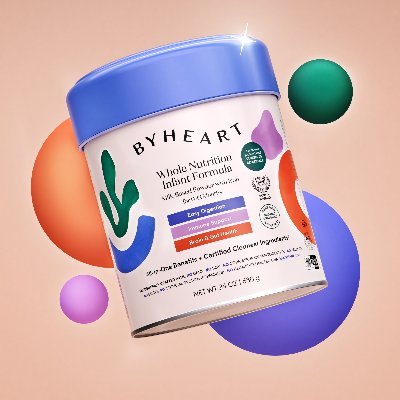Gå offline med appen Player FM !
What’s the Goal of Youth Sports?
Manage episode 438325892 series 2125047
What is the goal of youth sports?
It seems like an obvious question with an obvious answer. Isn’t the goal to provide kids with an opportunity to play sports? And to develop skills, teamwork, and camaraderie along the way?
Historically, those were indeed the goals of youth sport. Many parents & kids still pursue those goals. But some parents & players have other goals: A scholarship. College admission. The youth sports industry also has a goal: To make money.
Pay-to-Play
Many of today’s youth sports team use a pay-to-play model: parents pay (often exorbitant amounts) for their kids to play. Some youth sports organizations frame this cost as an “investment” and mention ROI — return on investment — on their websites. The required investment isn’t only financial; parents & families now invest a lot of time into sports practices, games, & tournaments.
“What used to be very much a youth-driven activity has changed into more of an adult-driven model,” says Jean Linscott, co-author of What is the Goal?: The Truth About the Youth Sports Industry. And because the adults have invested so much, they have an incentive to keep kids playing. This, Jean says, “is an enormous difference from playing for fun and playing for the love of the game.”
The first thing young parents should understand, if they’re considering signing a child up for a pay-to-play team, is that “this is a lifestyle choice,” says Kenneth Ruoff, Jean’s husband & co-author. “They should be putting aside 40 weekends a year for the next 10 years if you stick with pay-to-play sports through the high school years.”
Sadly, there’s no strong evidence to suggest that this investment of time & money is beneficial to most families or athletes. “We talked to a lot of the top coaches in Oregon and they basically burst out laughing when we asked them if travel tournaments had any role in player development,” Ken says. “They said, ‘No, it’s ridiculous; they have no role, especially at the younger ages.’ So all that money that is being spent on travel tournaments is playing no role in developing the kids as athletes.”
The Unacknowledged Costs of Youth Sports
Because of the tremendous costs associated with many youth sports teams, many kids do not have an opportunity to play or participate. And many children who do play experience physical and mental injuries, in part because they begin playing so young and often play year-’round.
“The impact of this model means that there are big problems with overuse injuries and burnout,” Jean says.”Early specialization in sports is disastrous for the bodies and minds of children,” Ken adds.
Unfortunately, in many places, there aren’t viable alternatives to the current pay-to-play youth sports model. Rec teams have faded or disappeared due to lack of funding and coaches. School teams may or may not be an option – but in many places, if a young athlete doesn’t also play on a travel team, they have little chance of earning a spot on a school team.
Questions to Ask Before Signing for a Travel Team
Before signing your child up for a pay-to-play, elite, or travel team, Jean says you should ask these “important, tough” questions:
- Do you track injury rates? What types of injuries are most common?
- Do you conduct exit interviews when families leave the club? What are the primary reasons athletes & families leave?
- What is your youth athlete development model?
Be forewarned, however. Asking these questions does not guarantee that you’re doing to get a straight answer. It’s also a good idea to talk to a number of families who have been involved with the club or team, including those who no longer participate.
Takeaways:
- The likelihood of receiving a college scholarship through youth sports is extremely low, and parents should consider alternative ways to fund their child’s education.
- Extricating oneself from the youth sports system can be challenging, but it is important to prioritize the well-being and interests of the child.
- Questioning the youth sports industry and advocating for affordable and inclusive options is crucial for the overall development of children.
- The emphasis on elite athletes and the pressure to participate in pay-to-play clubs can exclude many children and create unrealistic expectations.
- Sportswear companies play a role in the youth sports industry, but their focus on profit and exclusivity can hinder accessibility and development.
- Preferential admission for athletes in higher education perpetuates the socioeconomic elite and needs to be reevaluated.
- Parents have the power to ask questions, challenge the status quo, and advocate for changes that prioritize the well-being and enjoyment of youth sports.
Links we mentioned (or should have) in this episode:
What is the Goal?: The Truth About the Youth Sports Industry, by Jean Linscott & Kenneth Ruoff
Whole Child Sports: An Alternative to Toxic Youth Sports Culture — ON BOYS episode
Linda Flanagan: Youth Sports are Out of Control –– ON BOYS episode
Coaches Speak About Youth Sports — ON BOYS episode
Varsity Blues Scandal Explained — BC Law article
Sponsor Spotlight: Artifact Uprising
1st time buyers get 20% off (& returning customers get 15% off) with code ONBOYS

Sponsor Spotlight: IXL
The world’s most popular subscription-based learning site for K–12! Get 20% off at ixl.com/TODAY

Sponsor Spotlight: ByHeart
Get 10% off your first order using code ONBOYS at byheart.com
Sponsor Spotlight: Lumen
Understand your metabolism! Go to lumen.me/ONBOYS to save 15% on Lumen
Sponsor Spotlight: Armoire
Clothing rental subscription that makes getting dressed easier. Visit armoire.style/ONBOYS to get up to 50% OFF your first month.
Sponsor Spotlight: Avoila
Use code ONBOYS to save 10% when you shop Avoila Nourishing Face Oil
Our Sponsors:
* Check out IXL and use my code TODAY for a great deal: www.ixl.com
Advertising Inquiries: https://redcircle.com/brands
Privacy & Opt-Out: https://redcircle.com/privacy
350 episoder
Manage episode 438325892 series 2125047
What is the goal of youth sports?
It seems like an obvious question with an obvious answer. Isn’t the goal to provide kids with an opportunity to play sports? And to develop skills, teamwork, and camaraderie along the way?
Historically, those were indeed the goals of youth sport. Many parents & kids still pursue those goals. But some parents & players have other goals: A scholarship. College admission. The youth sports industry also has a goal: To make money.
Pay-to-Play
Many of today’s youth sports team use a pay-to-play model: parents pay (often exorbitant amounts) for their kids to play. Some youth sports organizations frame this cost as an “investment” and mention ROI — return on investment — on their websites. The required investment isn’t only financial; parents & families now invest a lot of time into sports practices, games, & tournaments.
“What used to be very much a youth-driven activity has changed into more of an adult-driven model,” says Jean Linscott, co-author of What is the Goal?: The Truth About the Youth Sports Industry. And because the adults have invested so much, they have an incentive to keep kids playing. This, Jean says, “is an enormous difference from playing for fun and playing for the love of the game.”
The first thing young parents should understand, if they’re considering signing a child up for a pay-to-play team, is that “this is a lifestyle choice,” says Kenneth Ruoff, Jean’s husband & co-author. “They should be putting aside 40 weekends a year for the next 10 years if you stick with pay-to-play sports through the high school years.”
Sadly, there’s no strong evidence to suggest that this investment of time & money is beneficial to most families or athletes. “We talked to a lot of the top coaches in Oregon and they basically burst out laughing when we asked them if travel tournaments had any role in player development,” Ken says. “They said, ‘No, it’s ridiculous; they have no role, especially at the younger ages.’ So all that money that is being spent on travel tournaments is playing no role in developing the kids as athletes.”
The Unacknowledged Costs of Youth Sports
Because of the tremendous costs associated with many youth sports teams, many kids do not have an opportunity to play or participate. And many children who do play experience physical and mental injuries, in part because they begin playing so young and often play year-’round.
“The impact of this model means that there are big problems with overuse injuries and burnout,” Jean says.”Early specialization in sports is disastrous for the bodies and minds of children,” Ken adds.
Unfortunately, in many places, there aren’t viable alternatives to the current pay-to-play youth sports model. Rec teams have faded or disappeared due to lack of funding and coaches. School teams may or may not be an option – but in many places, if a young athlete doesn’t also play on a travel team, they have little chance of earning a spot on a school team.
Questions to Ask Before Signing for a Travel Team
Before signing your child up for a pay-to-play, elite, or travel team, Jean says you should ask these “important, tough” questions:
- Do you track injury rates? What types of injuries are most common?
- Do you conduct exit interviews when families leave the club? What are the primary reasons athletes & families leave?
- What is your youth athlete development model?
Be forewarned, however. Asking these questions does not guarantee that you’re doing to get a straight answer. It’s also a good idea to talk to a number of families who have been involved with the club or team, including those who no longer participate.
Takeaways:
- The likelihood of receiving a college scholarship through youth sports is extremely low, and parents should consider alternative ways to fund their child’s education.
- Extricating oneself from the youth sports system can be challenging, but it is important to prioritize the well-being and interests of the child.
- Questioning the youth sports industry and advocating for affordable and inclusive options is crucial for the overall development of children.
- The emphasis on elite athletes and the pressure to participate in pay-to-play clubs can exclude many children and create unrealistic expectations.
- Sportswear companies play a role in the youth sports industry, but their focus on profit and exclusivity can hinder accessibility and development.
- Preferential admission for athletes in higher education perpetuates the socioeconomic elite and needs to be reevaluated.
- Parents have the power to ask questions, challenge the status quo, and advocate for changes that prioritize the well-being and enjoyment of youth sports.
Links we mentioned (or should have) in this episode:
What is the Goal?: The Truth About the Youth Sports Industry, by Jean Linscott & Kenneth Ruoff
Whole Child Sports: An Alternative to Toxic Youth Sports Culture — ON BOYS episode
Linda Flanagan: Youth Sports are Out of Control –– ON BOYS episode
Coaches Speak About Youth Sports — ON BOYS episode
Varsity Blues Scandal Explained — BC Law article
Sponsor Spotlight: Artifact Uprising
1st time buyers get 20% off (& returning customers get 15% off) with code ONBOYS

Sponsor Spotlight: IXL
The world’s most popular subscription-based learning site for K–12! Get 20% off at ixl.com/TODAY

Sponsor Spotlight: ByHeart
Get 10% off your first order using code ONBOYS at byheart.com
Sponsor Spotlight: Lumen
Understand your metabolism! Go to lumen.me/ONBOYS to save 15% on Lumen
Sponsor Spotlight: Armoire
Clothing rental subscription that makes getting dressed easier. Visit armoire.style/ONBOYS to get up to 50% OFF your first month.
Sponsor Spotlight: Avoila
Use code ONBOYS to save 10% when you shop Avoila Nourishing Face Oil
Our Sponsors:
* Check out IXL and use my code TODAY for a great deal: www.ixl.com
Advertising Inquiries: https://redcircle.com/brands
Privacy & Opt-Out: https://redcircle.com/privacy
350 episoder
सभी एपिसोड
×Velkommen til Player FM!
Player FM is scanning the web for high-quality podcasts for you to enjoy right now. It's the best podcast app and works on Android, iPhone, and the web. Signup to sync subscriptions across devices.









